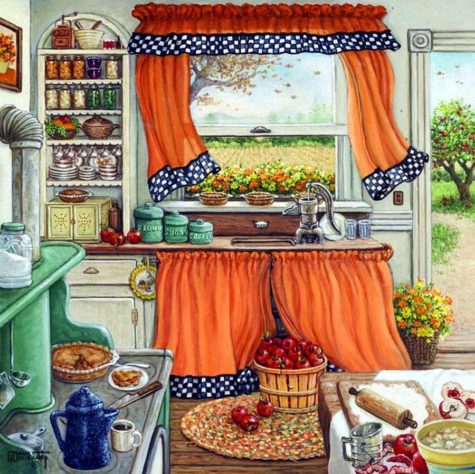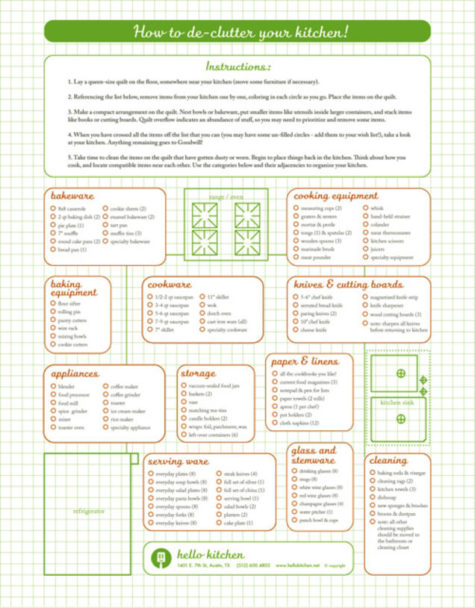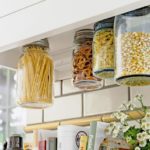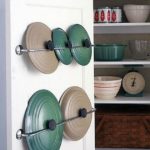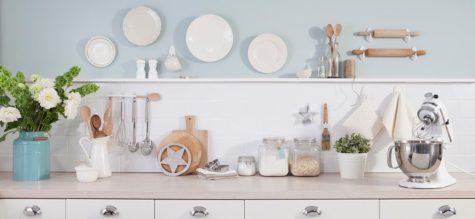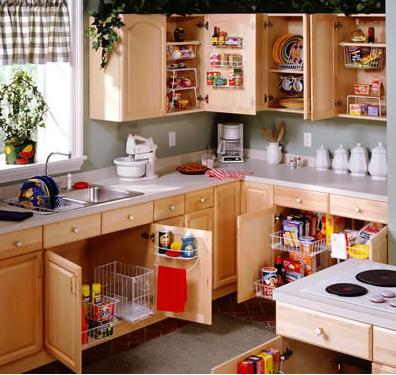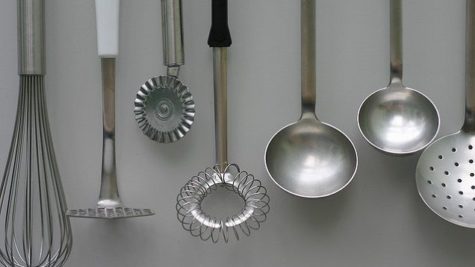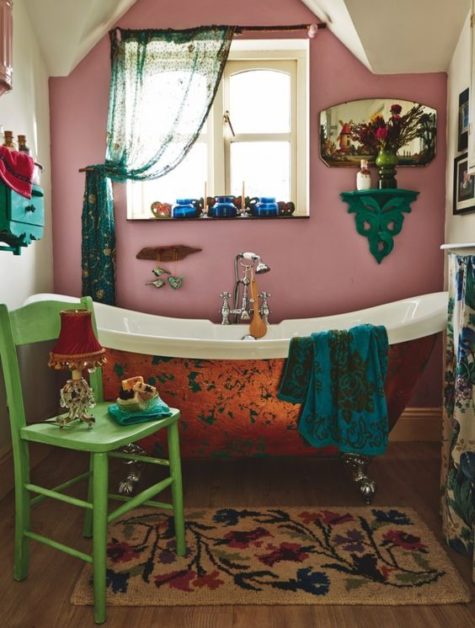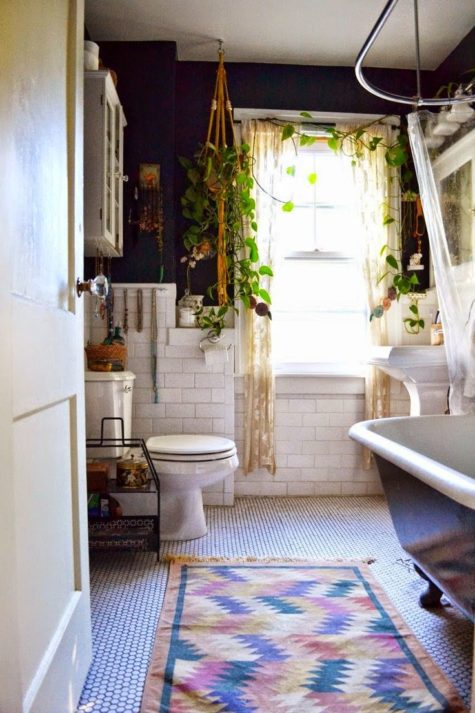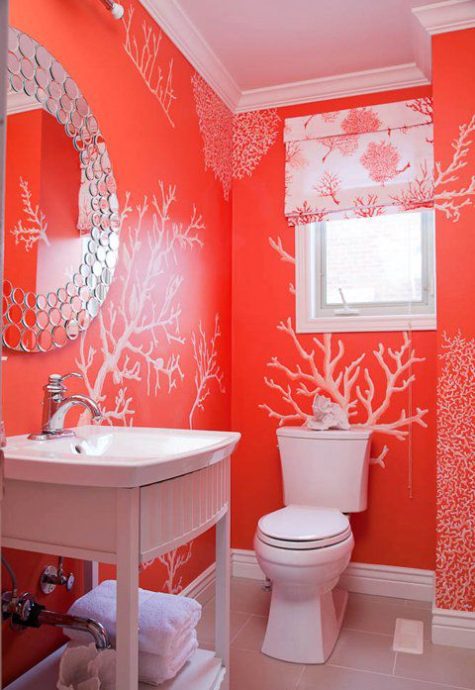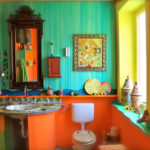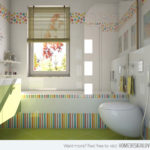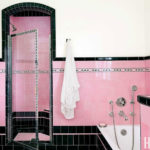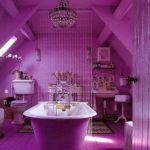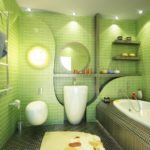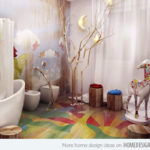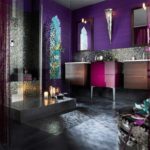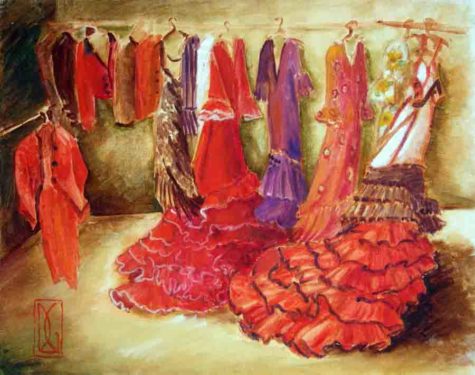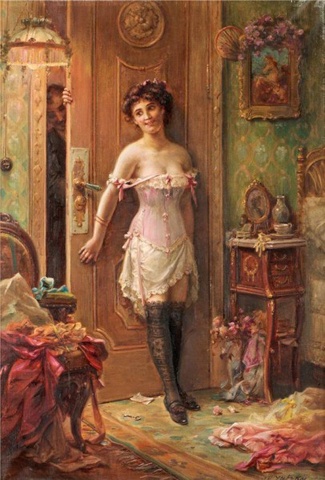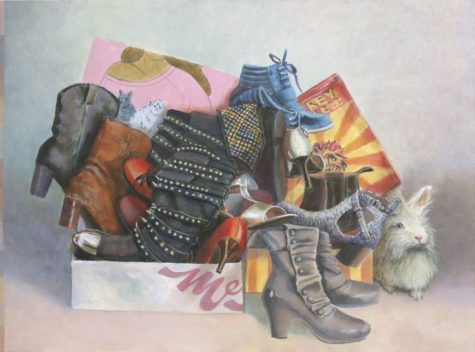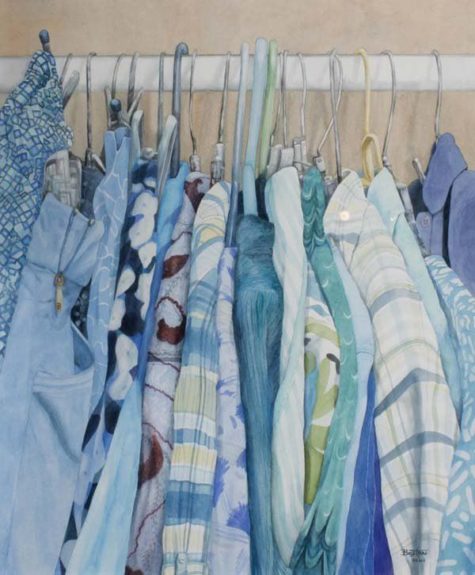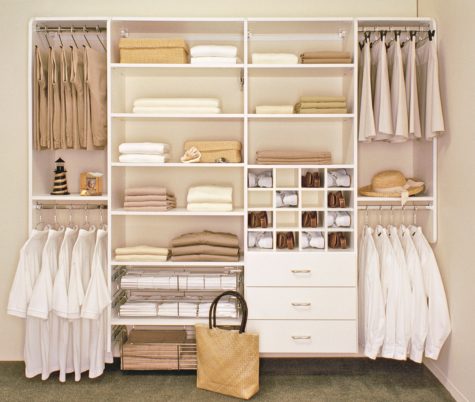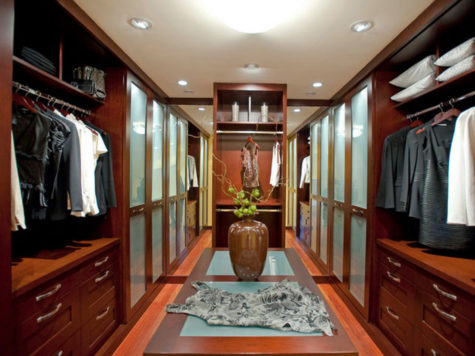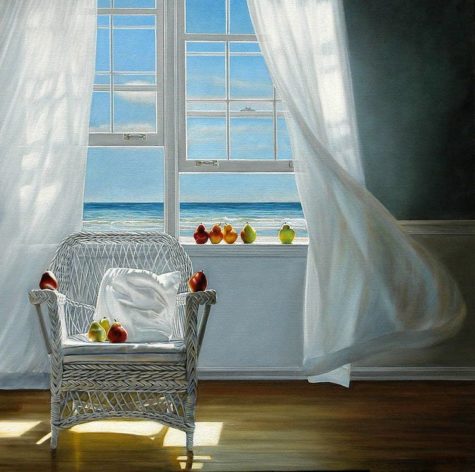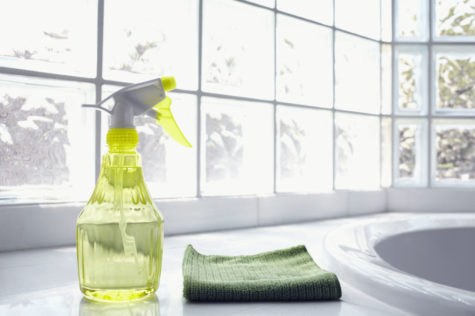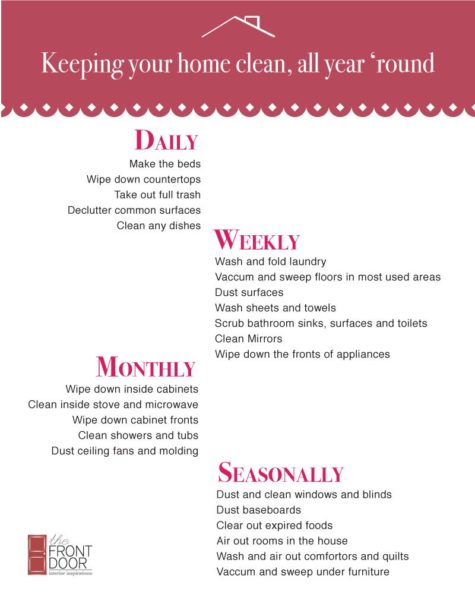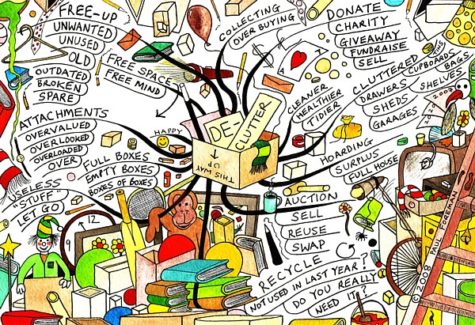Decluttering
Let’s Get Simple
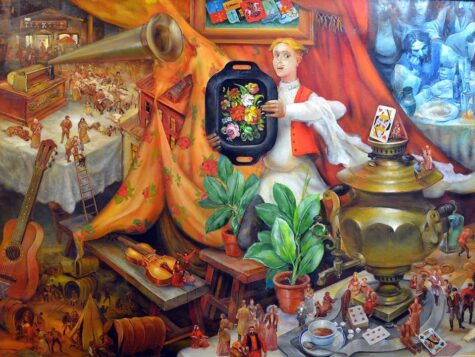
I don’t know about you guys, but my “I need help” notes are looking more and more like a “to do” list and less and less like a “be kind to Shirley” project. I’m feeling overwhelmed by the impossibility of dealing with them. I definitely didn’t want to set us up for failure and yet that’s how it is starting to feel to me. So I came up with an idea…
Remember our fun little post about Using Your Words? I decided to apply it to the “needs” collection of notes that I compiled at the beginning of our project (Let’s Get Radical). Here’s how it went ~ these are my actual notes:
- My bathroom faucets are almost totally clogged up but I don’t have to do anything about it today.
- There is not enough music in my life and I can do something about that right now if I want to.
- There is a giant tree branch in my yard and I don’t care.
- My car is rusting where paint has peeled off and that’s ok because it has 300,000+ miles on it and I can always buy some spray paint and cover it up if I want to.
- The yard is way over gown and I don’t care.
- The Magick room is cluttered and messy but not all the time, and I’ll clean it up when I’m ready.
- My daily meditation practice is non-existent and that’s OK.
- My Kwan Yin outdoor garden area is overgrown and neglected but that’s OK because it has a water moccasin guarding it and I’m not going to mess with him, not today anyway.
There were way a lot more, but you get the idea. I pulled all of my notes out and wrote a good answer on the ones I’m going to release into the wild and ripped them up. I put some of the others on an actual “to do” list. It felt really good. Like I have forgiven myself for the chaos around here, and liberated Shirley from the YOU SHOULD’s that have been dogging her for months.
I did, however keep two needs in my container. These are the two that I am actually going to make myself deal with. I chose them because it will be a huge sigh of relief to get them taken care of, and getting them taken care of will definitely make my life better. Here they are:
- My toilet doesn’t flush properly.
- Siding is falling off my house because wood is rotting behind it.
Obviously, for me, Radical Self Care revolves around maintaining my environment. This makes it simple because there are actual practical solutions. I actually can fix my toilet or buy a new one. And while I can’t do much about my wood rot (long story), it won’t be impossible to do a quick fix Band-Aid repair that will last through winter.
This little exercise really was helpful for me. I discovered what it was that I really want to do something about and liberated me from all the busy work that I am not interested in doing. It lightened my load, and gave me a boost of enthusiasm for the two things I’ve been dreading and avoiding for months.
So, what about you? Can you simplify your wants and needs for self care? Are there just one or two things that would make all the difference? Do you WANT to address them?
If so… call a committee meeting with yourself, make a plan of action, divide it into small easy bites, schedule a date a place and a time … and just dig in. Remember an epic journey begins with one small step followed by another, followed by more small steps with maybe a random number of mad dashes and desperate scrambles.
For A Well Organized Kitchen
Now that we’ve completed Feng Shui in the bathroom, I think it might be a good idea to head on into the kitchen and make sure it’s ready for all the cool stuff we’re going to make for our luxuriously delicious baths.
And even if you aren’t planning to make a bunch of cool bath products, a well-organized kitchen will help you cook as efficiently as possible and waste less food. Here are 10 great tips for organizing the heart of your home.
- Declutter Your Kitchen
Decluttering is the first step to organizing any room, and kitchens tend to have more unique kinds of clutter than other rooms: ice cream makers and other wedding-registry items, gadgets you were suckered into buying from TV infomercials, useless knife sets, and so on.Weed out the kitchen tools you never use, reevaluate whether you really need more than the essential kitchen items in your kitchen, get rid of the bulk spices that have already expired, reboot a junk food-filled pantry, and use up food in your freezer at least twice a year.
It’s easy to tell when you need to purge a few items from your kitchen—the overflowing drawers will tip you off to that. What’s harder is knowing what should stay and what should go. Unlike other rooms in your home, most things in the kitchen actually have a function and therefore feel like they should remain on hand (even when they’re jammed in the back of your cupboards). To begin your purge, Hello Kitchen recommends that you:
- Lay a queen-size quilt on the floor, somewhere near your kitchen (move some furniture if necessary).
- Referencing the list below, remove items from your kitchen one by one, coloring in each circle as you go. Place the items on the quilt.
The idea behind placing things on a queen size quilt is that the remaining items should all be things that can now be donated or given away.
This checklist can help you decide which kitchen tools to purge or not.
You can grab the free, printable PDF (kitchen_clean_out) from Hello Kitchen to get started on your kitchen audit. Just click on the link, and then click on the attachment to open the PDF file. Or, follow this link: How To Declutter Your Kitchen.
And just in case you want to be sure that you really do keep everything you might need, scroll down to the bottom of this post for a list of the top 5 must have tools for any kitchen
- Opt for Space-Saving, Uniform, See-Through Containers
One of the main contributors to kitchen chaos: Mountains of mismatched food storage containers. You only need a few types of food storage containers to maximize the amount of space you have in your cupboards. We prefer square or rectangular containers that stack up well. If possible, use containers that can go from fridge to microwave to dinner table to dishwasher. We also recommend organizing your spices with cleanly labeled, identical containers, perhaps on a magnetic spice rack or arranged in jars in a drawer with the tops labeled for easy identification.
- Make Use of the Back of Your Cabinet Doors
The inside of your cabinet door is wasted space. Instead of leaving that surface blank, organize your measuring cups and spoons there, store pot covers on the back with inexpensive hooks, build a knife block into the back of the door, hold cutting boards in a magazine rack on the door, and pretty much mount anything to the back for easy access. You can also just paint the inside of the doors with blackboard or whiteboard paint to keep a running grocery list and weekly meal plan.
- Create Sections with Tension Rods
Tension rods are a surprisingly awesome organization tool throughout the kitchen. You can use it for hidden paper towel storage, organizing cleaning bottles under the sink, creating an extra shelf for spices, and creating pantry dividers or lid organizers in drawers.
- Get Rid of Wasted Dead Space
Got a kitchen with awkward, unusable spaces? Yeah, me too. If you have trouble seeing or reaching items at the back of a space, such as the cabinet under the sink, the inner depths of your fridge, or the corner of your pantry, a Lazy Susan could help. For that weird space between your fridge and the wall next to it, build a roll-out pantry or a sliding spice rack (you might be able to use an IKEA shelf to create your own). If you’re desperate for more space in your kitchen, turn those false drawers in your kitchen into usable storage space. You can also create a secret toekick drawer at the bottom of a kitchen cabinet on the cheap.
- On The Fly Kitchen Organizers
Here we have a number of ideas for kitchen organizers that you may not have thought of. I didn’t include the tutorials, because I think they are easy enough to figure out:
- Know Which Foods Go in the Fridge, Freezer, or Pantry
Part of having an organized kitchen is having your ingredients stored properly. It wastes less food and it makes it easier to inventory what you have before you go grocery shopping. Here are our general guidelines for storing foods so they last longer in the fridge or freezer and which foods you don’t need to refrigerate. Don’t want to memorize them? Print out these charts and hang on your fridge to keep track of your food inventory and also know when foods are about to expire. Likewise, this graphic illustrates how long essential pantry foods will last.
- Store Food in the Fridge Properly
It’s not just a matter of keeping foods in or out of the fridge, however. Within the refrigerator there are ideal spots for different types of foods. Dairy, for example, is best kept on the upper shelf where the temperature is most constant, while meat should be in the bottom of the fridge, where it’s coldest and any leaks wouldn’t contaminate other foods. Check out more fridge storage guidelines here or this infographic.

You might also want to organize your fridge with a first-in-first-out (FIFO) method, like grocery stores do or use an “eat me first box” in your fridge to make sure you don’t waste food.
- Maximize Pantry Space So You Can See and Reach Everything
Out of sight really is out of mind when it comes to food storage. In the cupboard and pantry, make sure you can see and reach everything with things like stacking shelves, Lazy Susans, and clear storage containers. You can also group items in your pantry by meal (e.g., pastas next to tomato sauces) so you remember what to cook. For hard-to-stack cans of food, create a can holder using a magazine rack or organize canned goods in your cabinet with a closet rack. The back of your pantry door is a perfect spot to hang an over-the-door shoe holder to gather snacks, seasoning mixes, and more.
- Create Kitchen Work Zones
You’ve probably heard about the kitchen work triangle, the triangular layout between fridge, oven, and sink that makes it easy for a cook to move about the kitchen. Whether or not your kitchen conforms to this ideal, it’s helpful to think of your kitchen in terms of work zones: food storage, dishware storage, cleanup (sink and dishwasher), prep, and cooking zone. Store items according to their related zone. If you tend to have more than one person cooking the meal with you, you might create a second prep zone. Alternatively, you might want to add a baking zone or other specialty zones so everything is organized and kept in the proper places.
- Store Items Logically
That leads us to the last and most important point: Have a place for everything and everything in its place. Julia Child’s kitchen had a place for everything, with pots and pans hung on pegboards with their outlines drawn around them so she could put everything back in its place. Items you use most often should be easiest to reach, while you can put items you hardly use (e.g., turkey carving tools) higher up in the cabinets. Group your items next to the tools you use most with them (e.g., can opener by the cupboard you store cans in, baking ingredients with the baking pans).
For Maximum Cooking and Cleaning Efficiency
Whether you’ve just moved into a new space, are settling into a summer rental, or are just frustrated with your kitchen, here are some ideas to help you arrange your kitchen for maximum cooking and cleaning efficiency that will making mucking about in the space a lot more fun.
- Start with what you have:
You may love them, you may hate them, but unless you’ve got the money for a full scale renovation, your sink, stove and refrigerator aren’t going anywhere. Their position will dictate where everything else goes. Cleaning them up inside and out, can go a long way towards making them presentable.
- Create stations:
Taking a cue from restaurant kitchens, mentally assign stations for all of the tasks that you do in your kitchen: cleaning, storage, prepping, cooking, putting food away. If you bake a lot, you might also want a baking station.
- Organize items according to task:
The point is to organize the kitchen so that there’s as little unnecessary movement as possible. If, after you’ve washed the cutlery from tonight’s dinner at the sink, putting it away means walking across the kitchen to do so, chances are it will never get put away, no matter how pretty the cutlery drawer organizer is.
Move things around so that what you need is in arm’s reach: Cutlery and dishes should be near the sink; spices and cooking implements, whether rubber spatula or skillet, should be near the stove; put knives and chopping boards near your prep area; store sugar, flour, rolling pins, cookie sheets and standing mixer near your baking area.
- Out of reach:
Put things you rarely use — the turkey platter you pull out at Thanksgiving, the holiday-themed cookie cutters — higher up or lower down. Having to get on a ladder, or even bend your knees, means you’ll use something less frequently.
- If necessary, buy two:
I use cinnamon for cooking and for baking, so I’ve got one canister near the stove and one in my baking area. While I’m not suggesting you buy two food prep machines, consider doubling up on little items like spices and spatulas.
- Merchandise your storage:
Yes, I confess, my kitchen is always ready for its close up. I like my kitchen organized, I also like it pretty. Arranging items by size and color as well as by how often you use them can go a long way towards making your time in this room pleasant.
- Pretty but also useful:
If the canister that you use to store flour is hard to open, it’s not useful. Before you buy something, try it out in the store and consider how you’ll use it. Does it feel substantial in your hand but also light enough that it’s easy to use? Can you open a container with one hand? I’ve removed rubber sealant rings from many a flour container in order to make them easier to open.
- Stick with the place you’ve given for things:
With everything in my kitchen assigned a spot, it’s easy to see what I have and what’s missing. With a quick glance into my refrigerator, I can tell that I’m out of butter or milk or low on veggies. Since I always keep these things in the same place, a glance at my kitchen cupboards tells me I’m out of glasses and I’d better get washing!
An efficient set up based on what type of cooking you do can be very helpful.
For the Daily Cook
For you, an efficient setup is all about access and speed―quick in, quick out.
- The Strategies
Keep necessities within easy reach to save time. Make a place in the zone around the stove and the sink for essentials: oil, vinegar, knives, cutting board. Put ingredients and tools near where you will be using them: Keep the basket of garlic near the cutting board, sugar and flour near the stand mixer, and your best-loved pan on the front burner.
Use under-cabinet space and exposed shelving. A battery-operated under-cabinet lighting strip won’t dangle a cord or steal an outlet from the microwave, while an under-shelf cookbook holder pulls down when you need it and folds back up when you don’t. Things get lost on deep shelves. Put them in baskets that you can pull out and inspect at eye level.
Put the walls to work. Hang racks or pegs to keep utensils, pot holders, and dish towels in sight. Oversize Post-it notes or hanging rolls of paper (found at stationery and art-supply stores) are useful for reminders.
Make recycling efficient, too. Streamline end-of-meal cleanup by putting a bin for bottles and cans next to the one for regular trash (pull-out recycler, instead of out in the garage or in the mudroom.
For the Sunday Cook
When you’re too busy to cook, one weekend session―making dinners to freeze―reduces daily stress. Your kitchen setup should facilitate that.
- The Strategies
Keep essentials front and center. Stackable storage containers, large plastic mixing bowls, and other tools left on the counter won’t be in the way during the week and will be ready to go on Sunday.
Invest in equipment. A food sealer is just the thing for turning blanched green beans, fish fillets, and muffins into future instant meals. A scale is useful for weighing ingredients, which some cooks consider a faster and more reliable way to measure for bulk recipes. A calculator speeds the doubling and tripling of recipes.
Organize the freezer. When food items get crammed in willy-nilly, you won’t know what you have on hand. Instead, make designated sections (prepared meals, vegetables, desserts). Use dividers, baskets, or multilayer ice caddies to keep containers neat and accessible. And be sure to label everything with both what’s in the container, and when you cooked it up.
For the Come-on-in Cook
You like to share conversation―and kitchen prep―with a friend, a mate, your kids. Your goal: to arrange things so that two (or five) can work as efficiently as one.
- The Strategies
Make things easy for helpers to find. Bring things into the open with a wall-mounted utensil rack. Rachel Siegel, owner of Spruce, an organizing company in Berkeley, California, suggests storing tools by function.
Create parallel work stations. Set up separate work areas with equal access to commonly used tools and ingredients. A trash bin with a wide foot pedal can be moved about easily to serve cooks on both sides of an island or a counter.
Make the room kid-friendly. Create a zone where kids will feel welcome to help or just visit. For safety, move cleaning products and knives to adult heights. Stock up on kitchen tools made for kids and plastic bowls. Twin cutting boards let you chop the onions on your side of the island while your friend preps the apples on hers.
For the Entertainer
If you’re a cook who enjoys an audience, all the kitchen’s a stage. Create an illusion of effortlessness that belies a tightly organized support system.
- The Strategies
Set a mood. Clear vases of fresh herbs or beautiful bowls of picture-perfect produce will whet guests’ appetites. Install a dimmer to bring down the lighting, and if you entertain regularly, consider built-in speakers to keep the music flowing through the kitchen.
Use glass cupboard doors for display. Use glass-front cabinets to showcase what you love most, whether it’s your best china, an antique-pitcher collection, or even canisters filled with pastas in different shapes and colors.
Keep party gear handy. Create a place for platters and trays―with tray dividers to maintain order―so you don’t have to hunt for them. Give candles, place mats, and other table toppers a dedicated drawer. Use an index-card box to store recipes, past menus, friends’ food preferences, or wine labels. (Soak a bottle to remove the label, let it dry, paste it onto an index card, and jot down tasting notes.)
Five Must-Have Tools for Any Kitchen
Here are five kitchen-related things you really need and how to use them efficiently. These items do not represent everything you’ll need for all your cooking, in any kitchen, for every recipe, throughout your entire life. What we’re listing here are five core purchases that any kitchen should have, along with the best advice we’ve seen on how to get the most for your money out of them.
The tips and research for these items are pulled from one editor’s experience growing from a single dude who calls his mom to make mashed potatoes to a fairly reliable home cook who makes the big dinners, along with a few great reads:
- Three decent knives, sharpener for two of them
If we were crazed minimalists, we’d say you only truly need an eight-inch, plastic-handled stainless alloy chef’s knife, one you can find at a restaurant supply store for $10 (more on that later). You should test out any chef’s knife you’re looking at, and consider santoku-shaped blades if you do a lot of mincing or fine chopping. The key is making sure any knife feels right in your hand. The handle and weight in your hand are just as important as the blade, since proper use and sharpening should take care of that. Other than that, a sharp, sturdy paring knife and a cheap-as-you-can-get serrated bread knife have you covered for everything else. Skip the boning/fileting and utility knives, because you definitely don’t filet fish or slice giant mozzarella wheels that often.
How do you keep your knife sharp? Popular Mechanics has a good two-paragraph primer. Using a two-sided sharpening stone:
Lubricate the coarse side of the stone with mineral oil or water; then push the blade (at a 22- to 25-degree angle) across in a sweeping motion, like you’re cutting a thin slice off the stone. “Flip the knife and work the other side until a slight burr forms along the edge,” Montagno says. “Switch to the fine side of the stone, lift the blade to a slightly higher angle and hone off the burr to create a razor-sharp micro bevel.”
Obviously you can skip this process with the serrated bread knife, which can probably cut through loaves of bread long after you’re dead.
- Five pots and pans
How you save money here depends on how you cook. Unless you make a lot of meat dishes with reduction sauces containing browned bits, you really need just one cheap medium-sized nonstick skillet for your day-to-day cooking, small and larger-sized metal saucepan, a pasta-sized pot with a lid, and one serious, large (12- or 14-inch) steel pan with steep sides for your grander culinary ambitions, stir-frys, and bigger meat meals. We’re serious on the nonstick skillet being cheap, if safe-looking, because even the most expensive kind inevitably flake off, chip, and lose their egg-repelling properties over time.
Note: We don’t intend to imply you should completely cheap out on your pots and pans. Good cast iron pans, treated well, can last a lifetime. We’re just suggesting the multi-piece sets with every single size of pan, pot, and boiler, with three different lids, aren’t really necessary for cooking.
Everything else? That’s where it gets discretionary. One doesn’t spend three months’ salary at Sears to make sure they’ve got every tool for any imaginable home project, but instead builds a tool set over time. Roasting pans, springform cake pans, loaf pans, double boilers—try to borrow them for rare occasions, make do with makeshift versions, or possibly get lucky at your local Goodwill. Otherwise, another trip to the restaurant supply store is in your future.
- A restaurant supply store, or an Asian market
If you’re thinking about buying your cookware from a store in a mall, strip or otherwise, don’t do it. Similarly, don’t buy multi-pot sets, especially the kind signed by a chef you’ve seen on television. The best value for your dollar is found at your local or regional restaurant supply store. That’s where the restaurants you recommend to friends buy their stuff, and they make their money on volume. For certain kinds of cooking hardware, Asian food markets and “trading companies” often stock a lot of really cheap goods. For recipes that require random equipment you’re not sure you might use again, they’re often the smart buy.
- Serious instant read thermometer
You don’t have to spend a lot on this, but it’s crucial to buy quality instead of cheap. That’s spoken as someone who loves to grill, and whose wife does not like to eat on the bleeding edge of food safety. Go too cheap and you end up with unreadable LCD screens, melted plastic, and seriously slow updates that leave your food overcooked and the chef overworked.
- Reliable, small kitchen scale
When you’re new to stove-top cooking, you’ll want to get precise with your meat, vegetable, and starch measurements to ensure everything stays flavored in proportion. When you start dipping your toes into baking, that’s when you’ll really be glad you have a scale. The way you pack flour, the moisture in the air, and the random sizes of ingredients like eggs or fruits can seriously impact the outcome of a baking recipe—unless you’re weighing things in proportion. You don’t have to spend a lot, but you do want something digital, that holds up to 10 pounds, and which can “tare,” or set itself to zero, when you’ve got a container on it that doesn’t count in the measurement.
Sources:
Feng Shui In The Bathroom
I found this great little article about How A Bathroom Flushes Prosperity & What You Can Do About It. And I thought it was time to take a peek into our bathrooms, especially now that we are making all that wonderfully luxurious and delicious bath stuff.
Bathrooms and toilets have a really bad reputation as far as feng shui is concerned. This is because bathrooms and toilets have the tendency to drain or flush away the positive “Qi” energy of your home.
Hence, if “Qi” enters the bathroom, n rest assured that chances are it’s being flushed right out of your house and we certainly don’t want that to happen.
Since each and every part or corner of a house is related to an aspect of life, a bathroom in one particular corner or part would affect that specific area of life, and without proper precautions, will drain the luck or benefits of that aspect of life.
A bathroom in the center of your home:
A bathroom in the center of the house is usually considered bad feng shui. As the center of the house is the heart of the space in feng shui, also called the yin-yang point, you want to have it open, light and with a sense of beauty to it. Take these steps to fill your center home bathroom with good feng shui:
- Keep the bathroom clean and tidy
- Add art, candles or flowers to the room
- Position several air-purifying plants in the bathroom
- Be aware of the light quality in the room and add a dimmer switch to adjust the light if the room has no window
A bathroom facing the front door:
The reason a bathroom door facing the main door is considered bad feng shui is simple: the Universal energy, or Chi, comes into the house through the front door. If your bathroom is facing the front door, most of the good energy will escape through the bathroom, leaving little or no good feng shui energy to nourish the house. Use these practical tips to improve the potentially bad feng shui situation of a bathroom door facing your front door.
- Keep the bathroom door closed
- Create good feng shui in the bathroom
- Create a focal point near the entry to direct energy away from the bathroom
- Focus on good feng shui in the entry area to enhance the energy in the area
A bathroom in the money area:
A bathroom in the feng shui money area can certainly be a challenge. The first thing to do when you are dealing with any challenging feng shui area is to commit to keeping it very clean and orderly. There can be no good feng shui without cleanliness and order, and this especially applies to a challenging bagua area. Next, you can explore feng shui money area decorating tips and see which ones are possible to apply in your home. They include:
- Decorate the area with lush green plants
- Use pleasant scents, fresh flowers, and candles in the area
- Decorate with images of natural landscapes
- Add a water feature or mirror for good feng shui
A bathroom facing the kitchen area:
Having the kitchen and the bathroom doors face each other is very bad feng shui. You don’t need to know much about feng shui to intuitively understand that this is not a good setup for a healthy home. When two doors are opposite each other, the feng shui energies flow faster in and out of the spaces guarded by the doors. The solution is to create as much division between the two areas as possible. Use these tips:
- Keep the bathroom door closed
- Keep the bathroom clean and filled with good feng shui energy
- Use a divider screen, bamboo curtain or a tall plant to define the boundary between the two rooms
- Use different paint on the kitchen door wall and the bathroom door wall to define the areas
- Create a focal point between the two areas
A bathroom above the bedroom area:
A bathroom located above the bedroom is not good feng shui. An important factor to consider in looking for feng shui cures is how busy the upstairs bathroom will be. Combat the bad feng shui using these tips:
- Limit the upstairs bathroom to occasional use, such as a guest bathroom
- Relocate the bed if it is situated directly beneath the bathroom
- Use very light colors in the upstairs bathroom
- Use design features on the bedroom ceiling such as crown molding or a decorative medallion around the ceiling light
A bathroom over your front door:
If you have a bathroom above your front door, it is very important to take care of its good feng shui, as the quality of energy that comes through the front door determines the quality of energy in the house. Use these tips to address the challenging feng shui of a bathroom over your front door:
- Keep the bathroom clean and tidy
- Strengthen the bathroom feng shui element and keep the door closed
- Create a separation between the two spaces with a bathroom rug or deep color floor
- Position a crystal chandelier in the main entry
- Strengthen the feng shui of the main entrance with tall vertical elements
A bathroom under the staircase:
Stairs have a bad reputation in feng shui, although it isn’t as bad as the reputations of bathrooms. If you have a bathroom located under a staircase, you’ll need to take steps to address this challenging feng shui situation. Both areas require special attention to enhancing good feng shui.
- Keep the stairs well lit and in good repair
- Use light colors for the staircase
- Position a crystal chandelier at the bottom of the staircase for good feng shui
- Move a bathroom located under a staircase if possible
- Keep the feng shui elements of the bathroom strong
- Keep the door to the bathroom closed at all times
- Decorate the bathroom in colors appropriate for its sector
A bathroom in the south-east sector:
Since South-East part of a house is related to wealth, a bathroom in this part will drain away all the money from the house; joblessness, sinking income, increasing debt and even bankruptcy are some effects of South-East bathroom
For bathrooms located in the South-East sector of your home, follow the basic recommendations for good feng shui in any bathroom. Keep the door and toilet lid closed and keep the bathroom clean and tidy. In addition, these tips can improve the feng shui of the room:
- Position several air-purifying plants in the bathroom
- Hang a mirror on the bathroom door (following feng shui mirror guidance)
- Use metallic colored gold, silver or gray rugs, preferably in circular shapes
- Hang a metallic wind chime in the area
- Burn candles in the room frequently
A bathroom in the north-west sector:
The North-West part of the house deals with helpful people and luck from heaven, a toilet in this part will drain away all those from you. No help from anyone, backstabbing, office politics, discredit etc. are some effects of North-West bathroom.
North-West sector bathrooms should follow the basic recommendations for good feng shui. Avoid clutter and don’t position a mirror to reflect the toilet seat. Replace any leaky faucets to prevent them from flushing away money. In addition:
- Use lush houseplants in the bathroom
- Put a container with water in the room
- Use a blue rug on the bathroom floor
- Never use metallic chimes in a North-West bathroom
General Rules For Good Feng Shui in the Bathroom
A bathroom has to be somewhere in the house. Doesn’t it? The answer to that it yes, but remember, it’s vital to minimize – or possibly eliminate – the draining or flushing of chi and the “good” from your life.
The main feng shui cure – and the most solid one – to neutralize the negative energy of a bathroom is to actually take good care of your bathroom. If you focus on creating good energy in your bathroom if you transform your bathroom into a beautiful spa – why would you need protection from its energy then?
There are any ways to create a bathroom that has a clear, fresh and nourishing energy, you just have to put some time and effort into creating good energy, and then maintaining it.
Here is a list of general bathroom tips:
- Always keep the bathroom door closed.
- Make sure to keep the toilet lid closed.
- Replace any torn curtains with new ones.
- Keep the bathroom clean, fresh and airy.
- Use a good air freshener.
- Make sure that the bathroom receives ample sunlight and fresh air.
- Keep windows, ventilators and doors of bathroom clean.
- Get the best essential aromatic oils for a relaxed bath.
If there’s a bathroom in North-East or South-West then;
- Hang a metallic wind chime in the bathroom.
- Make sure that there are no Chinese symbols on the chime.
- Make sure that no one passes or sits under the wind chime.
- Place metallic colored rugs such as gold, silver or grey; circular shaped ones must be preferred.
If there’s a bathroom in South then;
- Hang a crystal ball in the window of the bathroom; the rainbow lights from the crystal will reduce the bad fire energy.
- Make sure to cleanse the crystal ball as it’s going to absorb negative energy.
- Alternatively, you can also use a crystal geode which is a rock with hollow center.
- lace square shaped skin colored rug; you can also opt for yellow, pink or chocolate brown colored ones.
If there’s a bathroom in North then;
- Place some lush green houseplants in the bathroom.
- Put a square shaped rug in shades of green.
If there’s a bathroom in East or South-East then;
- Place glitter lamps in the bathroom and make sure to turn them on for around 2-3 hours daily.
- If glitter lamps aren’t your thing then you can light candles in the bathroom.
- Triangular rugs in shades of red are best for such a bathroom.
If there’s a bathroom in West or North-West then;
- Just place an urn with water in the bathroom.
- Place blue shaded rug; if possible, get a wavy shaped one.
What to Avoid
- Avoid clutter in the bathroom; in fact avoid it everywhere.
- Avoid mirrors reflecting toilet seats.
- Avoid leaking taps and faucets; replace them immediately else they’ll flush away the money.
- Replace broken items, such as, soap dispensers, shampoo bottles etc.
- Don’t keep old and worn-out toothbrushes in bathroom.
- Avoid a bathroom or toilet at the center of home.
- Avoid bathroom door facing bedroom, kitchen or dining room.
- Avoid locating a bathroom adjacent or near to house entrance.
- Never have a bathroom above kitchen or main door.
- Avoid locating a bathroom or toilet under staircases.
- Never place metallic wind chimes in North, North-West or West bathroom.
- Never try to place metallic things in the South-East bathroom; it’ll drain away all the money from house.
Mirrors and bathroom doors:
The reason mirrors are sometimes recommended in feng shui for the bathroom door is because a mirror can make a wall or a door energetically disappear, so to speak.
A mirror also pushes the energy back; this is why, for example, it is always recommended to avoid a mirror facing the main door.
A mirror outside the bathroom door is sometimes used in feng shui as the mirror pushes the energy away from entering the bathroom, thus the energy is prevented from going down the drain. Bathrooms have a very bad reputation in feng shui, so a mirror on the bathroom door became a popular feng shui cure for it.
You have to decide for yourself if a mirror on the bathroom door is something you would like in your home decor scheme. And if it makes sense to you.
If you do love mirrors, the best place to have them is not on the bathroom door, but actually in the bathroom.
Mirrors bring the feng shui energy of the water element, and this is excellent for any bathroom as it cleanses – energetically speaking – and refreshes the stagnant and stale energy. Busy bathrooms create a lot of low or challenging energy very quickly, so instead of trying to pretend that there is no bathroom there – which is the goal of placing a mirror on the door, I suggest to actually deal with the energy of the bathroom in the first place.
Another point to consider is this: when you place a mirror on the bathroom door, you actually make the door disappear, too! And doors are very important in feng shui as energetic guardians of any given space, they create good containers for specific energies.
Sinks:
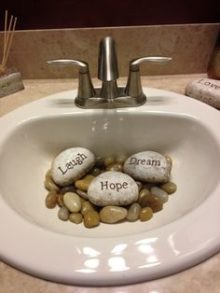 Here is a cute idea for the bathroom sink so that the energy doesn’t simply run away down the drain. Of course, the stones you use would have to be maintained so that they wouldn’t attract anything furry or green… like algae or soap scum, but it’s really a cute idea, and worth doing, if you like it!
Here is a cute idea for the bathroom sink so that the energy doesn’t simply run away down the drain. Of course, the stones you use would have to be maintained so that they wouldn’t attract anything furry or green… like algae or soap scum, but it’s really a cute idea, and worth doing, if you like it!
Important points:
The first and foremost thing about feng shui cures that work is that they have to be really liked by you and make sense in your overall home decor style.
If you bring a so-called powerful feng shui cure that is supposed to work but looks totally out of sorts in your space, I assure you it will not create good feng shui for you. Maybe even quite the opposite.
Last but not least:
Lastly, I thought it might be fun to upload a gallery of really amazing and wonderful bathrooms so that we can drool, and fantasize, and dream…
Sources:
In The Closet
Now that we’ve cleaned up our act, it’s time to take a quick look into our closets. If your life seems unbalanced or chaotic, your closets may be to blame. Think of the state of your closets as a feng shui test of your self-esteem. In feng shui closets, are connected to your innermost, your deepest, and often hidden feelings about yourself. Think of the state of your closets as a feng shui test of your self-esteem.
- How healthy is your self-esteem?
- How clean, peaceful and beautiful is your inner world?
Here is the thing about closets – most people think of closets as an “out of sight, out of mind” deal. Not true. Especially in feng shui terms, where we know that everything is energy. It is important to understand that with the feng shui energy, the “out of sight” strategy does not work. You cannot cover, conceal or pretend not to see low energy, because, in the world of feng shui energy, there are no boundaries.
Unfortunately, most homes have busy, cluttered and just plain ugly closets. This always puzzles me; if you just take a moment to think about it, once you open an ugly and messy closet and put your clothes on, you start carrying this ugly, messy energy with you! Please understand I do not mean this as a metaphor, but as an actual experience.
So, if you are working on improving the feng shui energy in your home, do not neglect your closets, put them high on your feng shui to-do list. For optimal feng shui or energy flow, take a look at your closets’ contents and doors, which may be keeping you awake or causing unnecessary grief. Explore relatively simple ways to redirect the room’s flow and help you get back on track.
Open your closets and take a look. No worries, nobody is looking, it is just you and your closet.
- What is it telling you?
If your closet is asking for some loving care, here are some easy feng shui tips:
Reflecting on Energy
Mirrors on the outside of bedroom closet doors are a feng shui no-no, reflecting yang energy, which affects relationship, intimacy and sleep, explains Ann Bingley Gallops, a New York city feng-shui consultant. Rather than replacing the closet doors, simply hang curtains in front of them. That way you can close the curtains before climbing into bed, and open them when you get up. If you prefer, cover the mirror with peel-and-stick frosted paper or with wallpaper. Pink, blue and green offer ideal feng-shui curtain or wallpaper colors, representing multiple emotions, including love and tranquility.
Color and Light
If you have a walk-in closet, be sure the lighting is friendly and warm. Good quality lighting is extremely important for your well-being, be sure to pay attention to its quality in your walk-in closets.
No matter big or small, walk-in or not, if your closet has not been given any attention for years, be sure to refresh your closet with a fresh coat of paint.
Yes, I do mean it and I am not crazy. Unless you plan to call California Closets for a complete makeover, you owe your closet space a fresh coat of paint. Plus, you get to take all your clothes out of your closet before painting, which should make the next step much easier!
Clean and Paint
Start by taking everything out of your closet completely. Take a bucket with 1 gallon hot water mixed with ½ cup vinegar and 1 tbsp of tea tree oil. After vacuuming the closet thoroughly, wipe clean the whole closet starting from top to bottom, including the walls and baseboards.
A fresh coat of paint will work wonders at this point. Leave the door open so the paint dries well, it should take 2 to 3 days. If in a hurry, a hand held fan will speed the drying process.
Clear the Clutter
If you open the closet door and don’t know where to begin, it’s best to remove everything. As you do this, sort each item into piles or boxes, such as what you’ll keep, what you no longer want or need, what you plan to donate to charity or sell, and items you plan to throw away.
Before you can apply the principles of feng shui, you need to make sure you absolutely love everything in your closet. The average person only wears 20 percent of his or her wardrobe, meaning that there are likely quite a few pieces in your closet that you could donate or re-sell without ever missing them. Plus, when you look and feel great in your clothes, this has a significant effect on your positive energy and how you see yourself.
To separate what stays and what goes, take everything out of your closet, then try everything on. Each item that fits, looks amazing on you, and makes you feel fabulous, goes back in. Anything that’s dated, worn, stained, unflattering or doesn’t fit stays out — for good. Decide which discarded pieces you could sell on consignment, if you’d like, then bag up the rest for donation.
- Note: Tomorrow we will be exploring some great ways to use these items to beautify other areas of our home, so before you make a trip the Planet Aid bin, stay tuned for what’s on tap bright and early tomorrow morning.
Organize
As you return items to the closet, do so orderly, using woven bins to keep small clutter items neatly out of direct sight. A quick trip to IKEA will arm you with all you need for an organized closet. From baskets to boxes and everything in between, you need to have a clear system as to what goes where. And for how long. Keep your closet up with the seasons and have a clear system of dealing with seasonal clothing.
The Fifty Percent Clearance Rule
This rule means that try to have your closet clear of fifty percent of the stuff so it is clear. There should be enough space in your closet so that you can see what is there without unsettling everything. If there are shoes on the floor of the closet, they should not be touching the stuff hanging in the closet. Try to give away all that you don’t need, doesn’t fit or you haven’t worn in more than a year. When you get rid of old, unworn clothes, you make up more space for fresh new clothes in your closet.
A full length mirror at the back of the closet will give the feeling of space and also help you locate items that are in the back.
Hanger Hangups and Solutions
Something as seemingly insignificant as closet hangers can improve feng shui flow. Match the hanger with its clothing. For example, use durable wood hangers for heavy coats or suits, and satin-covers hangers for lightweight dresses or lingerie. Rather than using hangers, use hooks to create space and improve closet organization. To help closet clutter, add a closet organizer system to help keep your wardrobe orderly and accessible.
Give Your Closet A Cohesive Look
Once you’ve properly aligned your clothes, you’ll want to make sure your entire closet space looks uniform. Simple changes, such as having matching hangers, making sure all hangers face the same way and placing items you can’t hang up in identical, labeled bins can bring unity to your closet. Doing this creates a harmonious flow by ensuring each component is standardized and easy for you to locate.
Beautify
Yes, beautify. This means treating yourself nicely and respectfully and creating a sense of beauty in your closets. Be it a small photo that brings happy memories, some feng shui crystals or well-displayed pieces of jewelry, beauty is the most healing energy and should be everywhere around you.
Easy, isn’t it? Easy and simple. Watch for profound changes coming along as you start treating your home, especially your closets, with proper respect. Ultimately, the respect you show your home speaks of the respect you have for yourself.
7 Closet Makeover Tips
How organized (or disorganized) your closets are can set the tone for your whole day.
If you can pick the perfect outfit with ease, and it emerges from the closet unwrinkled, ready-to-wear and with the right accessories standing by, you’ll begin your day in a more positive mindset. It’s a small thing that, 365 days a year, really adds up.
Whether you have a large walk-in or a small close in a New York City apartment, some of these 7 closet makeover tips are sure to give you better organization and more space.
1. Customize –
Customized solutions, such as clear plastic bins you can stack however you like, wire drawers, or hanging canvas shelves for shoes or sweaters, give you the storage solutions you need. Double hung rods can make the most of a small space, especially if the bulk of your wardrobe is pants and shirts (rather than dresses). Best of all, these do-it-yourself customizations don’t cost a lot.
2. Roll underwear –
Rolling underwear in plastic bins with drawers of different sizes helps you easily sort by style or color. Plus, rolled clothing takes up less space and stays neater.
3. Select the right hangers –
Fine lingerie and evening dresses should be hung on satin hangers. Hang coats on heavy wood hangers. Whatever hangers you select, make sure clothes stay on them, because there’s nothing zen about shirts on the closet floor. Short on space? Select slim profile hangers which can double or triple available hanging space.
4. Store clothes the right way –
In addition to getting the right hanger for each job, fold items that can stretch easily, such as t-shirts and sweaters, and stack on shelves.
5. Think outside of hangers and shelves –
Hang belts, ties, and even jewelry and scarves on pegboard lining the back or sides of the closet walls. A door with pegboard on the inside adds space to a small closet. Use hooks that hang on the closet rod for bags that might lose shape if they get stuffed inside a drawer or tucked on a shelf.
6. Shoe solutions: Bins or board? –
A diagonal plywood board takes up space but displays shoes conveniently and fashionably. Clear plastic bins or hanging canvas shoe shelves are good solutions for a smaller space.
7. Color-coordinate –
Once your closet is organized, you can go the next step by color-coordinating items of the same type (i.e., shirts, tank tops, skirts, pants, etc.) This gives a cohesive, professionally organized look to any closet. It’s easiest to organize items in the order of the colors of a rainbow: Red, Orange, Yellow, Green, Blue, Indigo, Violet, and then black and white.
The biggest challenge to organize is having items with no set space. Keeping an uncluttered home is really easy. Create a place for everything and, when you’re done using it, the item goes back in that place. This is especially true for closets.
You’ll reduce the amount of time you spend putting away laundry, because it will be a no-brainer every time. You’ll also reduce morning stress. You might even spend less money because you’ll know exactly what you have to wear; you won’t fight those “nothing-to-wear-blues” that lead to shopping sprees.
You might not believe that an organized closet can change your life, but you’ll see that it can.
Extreme Closet Reorganization
When it comes to closets, we could all use good chi. Classic feng shui strategies can be integrated into your space so that every time you open those closet doors you experience serenity and calm, rather than disorder and chaos.
If you want to go to extremes, with your feng shui closet reorganization, or if you love to be thorough, you can create a positive energy flow with your pared-down wardrobe. by doing the following:
Place your clothes in this order, going from left to right, for each category:
- Your work clothes: these represent prosperity.
- Your casual wear: the clothes you wear on the weekends or when you’re hanging out with your family and friends represent your relationships with loved ones.
- Your creative wear: anything in your wardrobe that you wear when you’re crafting, gardening, baking and so on — these represent inspiration and your artistic side.
- Your formal wear: these items represent success.
- Your love life items: clothing you wear on date night, and your lingerie, represent love.
Color plays an important role in feng shui, even inside the closet. Once you have your clothes in the right categories, arrange them in the following color order, from left to right within each section: black, brown, blue, green, purple, red, orange, pink, yellow, white, metallic and grey.
Alternatively, rainbows symbolize blessing, hope, and a good future. Rather than opening your closet doors to a chaotic mix of colors, organize your clothes, use the rainbow as a guide — red, orange, yellow, green, blue, indigo and purple, and then black and white — to improve your home’s energy.
Arrange Clothes by Function
Organize your clothes in such a way that there is a system to them. Hang your shirts together, pants, skirts and dresses together. Then hang t-shirts together, tang tops and long sleeves shirts together. Finally arrange each piece of clothing by color. Hang all white dress shirts in one part, blank tank tops in another and so on. The same rule applies to your shoes at the bottom shelf of the closet. Make sure the shoes all point in one direction, facing the door. It’s a good idea to buy new hangers so your closet wears a new and neat look.
To the left of the closet, put your work or business clothes. That’s where your knowledge and prosperity are. In the middle of the closet place your casual, formal and weekend wear for your health, fame and career. Finally put your intimate clothes on the right of the closet to promote creativity.
Organize clothing by type
After you’ve organized by color, arrange your clothing by type within each hue. Place items from long sleeve to short sleeve and long dresses to short dresses (or vice versa). It doesn’t matter how you order your clothing types, just that you stay consistent in each section.
Here are a variety of simple inexpensive ideas for extreme organization. Note the heavy reliance on hangers and shower curtain clips:
Oh my! Does anyone actually have this many clothes? That they love, wear, and must keep?
Sources:
Lets Clean Up Our Act
It occurred to me as I was browsing for images to decorate our project with, that in all the images of beautiful homes, lifestyles of the rich and famous, and luxurious still life paintings… there is this pervading feeling of clarity and cleanliness. The glass in the paintings sparkle in their transparency, the homes are spectacularly clean and clutter free, and so I was thinking that maybe it would be worthwhile to do some cleaning.
And then, when researching for ideas for my front door, I stumbled onto this. I think it’s perfect for this project. What do you think?
The All Year Cleaning List:
The “All Year Cleaning List” has arrived at the Front Door. Keeping your home clean all year can be daunting and sometimes a little confusing. Some tasks need to be done everyday, while others can be done once a season. We’ve created an easy guide to follow daily, weekly, monthly, and seasonally. We’ve found keeping this guide up on the refrigerator is a nice reminder for the day’s tasks. If you want to kick it up a notch, use a clear sleeve to hold this guide and mark off what you do each day with a dry erase marker.
Daily
- Make the beds
- Wipe down the countertops
- Take out full trash
- Declutter common surfaces
- Clean any dishes
Weekly
- Wash and fold laundry
- Vacuum and sweep floors in most used areas
- Dust surfaces
- Wash sheets and towels
- Scrub bathroom and towels
- Scrub bathroom sinks, surfaces and toilets
- Clean Mirrors
- Wipe down the fronts of appliances
Monthly
- Wipe down inside cabinets
- Clean inside stove and microwave
- Wipe down cabinet fronts
- Clean showers and tubs
- Dust ceiling fans and molding
Seasonally
- Dust and clean windows and blinds
- Dust baseboards
- Clear out expired foods
- Air out rooms in the house
- Wash and air out comforters and quilts
- Vacuum and sweep under furniture
Our First Exercise
For our first exercise, let’s make a list… maybe even more than one. Take a look around your home. We are looking specifically for stuff that screams “poverty” and “lack.” Some of those items simply need to go into the trash bin. Some could be easily replaced with a trip to Walmart. Socks with holes in them, for example.
Other things might not be so easy. Maybe you need them, maybe it would be way too expensive to replace them. So, my thinking is… if you need it, and you can’t afford to replace it, then hey… decorate it and make it beautiful, or at the very least, oddly interesting.
In my house, those things include the following:
- The front door
- My couch
- The living room carpet
- My dining room chairs
- The bathroom floor
So, throw some stuff away. Make a list of those things you might want to just replace, and then make a list of what might need to be decorated and beautified. If you share that list here in the comments, I will try to include as many of them as possible in our DIY projects as the project progresses.
If you have items that are broken and just need fixing, that could be an additional list. I do have some things that fall into this category, and if I can, I will share tutorials on how to fix them as well.
Hey… let’s get started right now!
Take A Walk

Get in touch with nature. Take a walk, just go outside for a few minutes and smell the air, feel the ground under your feet, look at the sky…
Maybe you might like to go somewhere with water … the ocean, a river, a lake, even just a man-made fountain if nothing else is available.
Take a walk in the rain, or just watch the rain – does it make the leaves dance? Rain can be calming and focusing at the same time.
Making a connection with the earth herself is a very effective way to get centered and refocus your thoughts.
Feng Shui – Project Overview
This post provides links to pertinent aspects of the Feng Shui project, so that you won’t have to sift through the archives to find out what you want to know.
This project was combined with a project on Clearing Our Clutter. The two projects were intended to work in tandem with one another, for this reason, I included the decluttering links as well. If you are only interested in the Feng Shui information, you can click on the Feng Shui category link in the sidebar. The Clearing Our Clutter posts have a project overview of their own, here: Clearing Our Clutter – Project Overview.
Links to the preliminary information:
- Feng Shui for Prosperity – the original concept
- What is Feng Shui?
- What is a Bagua?
If you would like to try this project for yourself, you can start on Day One: Make a Feng Shui Journal, and come back daily to continue on thru to the last one: Your Car is Your Friend. Or, you can pick through the posts, finding what seems interesting and useful. The important thing is to commit to a daily practice.
As you work with the Feng Shui project, we encourage you to post your thoughts, ideas, results, joys and disappointments as you go. This is an active blog, and if you post, we will notice and reply, and give you the benefit of our own experience and support if it seems pertinent or appropriate.
The basic summary of our results is posted here: Wrapping things up.
Here is the complete listing of the daily posts for the Feng Shui project:
- Day 1: Make a Feng Shui Journal and 27 Fling Boogie
- Day 2: Create a Bagua For Your Home and 27 things find a new home
- Day 3: The Prosperity Area and Purple for Prosperity and 5 minute room rescue
- Day 4: Big Money Symbols and Hot spot fire drill
- Day 5: Fame and Reputation Area and Liven up your Fame and Reputation with Color
- Day 5: Let your light shine and 3 Minutes to Fame and Fortune
- Day 6:Undergarment Boogie and The Love and Relationship Area
- Day 7: Symbols of love and Spread the love. and Colorize your love life
- Day 8: A quickie and The Creativity and Children Area
- Day 9: Enliven creativity and A quick fix and Colorize your Creativity
- Day 10: Enhancing the flow of chi and Mastering the concept of Chi and Clear that corner
- Day 11: Removing Hazards to Prosperity
- Day 12: Removing Hazards to Fame and Reputation
- Day 13: Removing Hazards to Relationships
- Day 14: Removing Hazards to Creativity
- Day 15: Another 27 Fling Boogie and Helpful People and Travel – Overview
- Day 16: Attracting Helpful People and Another five minute room rescue and Color and Containers for Helpful People
- Day 17: Your career in black and white and Take care of it now and Career area – an overview
- Day 18: Get your career moving and The rubber meets the road
- Day 19: Another hot spot fire drill and Skills and Knowledge area – an overview
- Day 20: Add substance to Skills and Knowledge and Book Drop and Enliven your Skills with color
- Day 21: Grab some garage sale stuff and Family area – an overview
- Day 22: Stabilize your Family area with symbols and Family photo project and Colorize your family area
- Day 23: Harmonize and healing with color and Finding your center and General and healing area – an overview
- Day 24: Symbols and anchors for your center and 5 extra minutes
- Day 25: Remove Hazards from Helpful People and Travel Area…
- Day 26: Remove hazards to your career and Remove hazards to Skills and Knowledge
- Day 27: Remove hazards to family area and Remove hazardous elements from Health area
- Day 28: A quick summary of each area and The effects of clutter
- Day 29: The Feng Shui Cover Your Butt Cure and Declutter – Let’s go for it!
- Day 30: Feng shui for your car and Car bagua and Your car is your friend
Clearing Our Clutter – Project Overview
This post provides links to pertinent aspects of the Clearing Our Clutter project, so that you won’t have to sift through the archives to find out what you want to know.
This project was combined with a project on Feng Shui, because of this some of the posts overlap, and the two projects work in tandem with one another. The original statement of intent can be found here: Feng Shui For Prosperity.
If you would like to try this project for yourself, you can start on Day One: 27 Fling Boogie, and come back daily to continue on thru to the last one: Your Car Is Your Friend. Or, you can pick through the posts, finding what seems interesting and useful. The important thing is to commit to a daily practice.
As you work with the Clearing Our Clutter, we encourage you to post your thoughts, ideas, results, joys and disappointments as you go. This is an active blog, and if you post, we will notice and reply, and give you the benefit of our own experience and support if it seems pertinent or appropriate.
A gallery of all the images used in this project can be found here: A Gallery of Clutter!
Here is the complete listing of the daily posts for the Clearing Our Clutter project:
- 27 Fling Boogie
- 27 things find a new home
- Five Minute Room Rescue
- Hot Spot Fire Drill
- 3 Minutes for Fame and Fortune
- Undergarment Boogie
- Spread the love
- A quickie
- A quick fix
- Clear that corner
- Removing Hazards to Prosperity
- Removing Hazards to Fame and Reputation
- Removing Hazards to Relationships
- Removing Hazards to Creativity
- Another 27 Fling Boogie
- Another five minute room rescue
- Take care of it now
- The rubber meets the road
- Another hot spot fire drill
- Book Drop
- Family photo project
- Grab some garage sale stuff
- Finding your center
- 5 extra minutes
- Remove Hazards from Helpful People and Travel
- Remove hazards to your career
- Remove hazards to Skills and Knowledge
- Remove hazards to family area
- Remove hazardous elements from Health
- The effects of clutter
- Declutter – Let’s go for it!
- Your car is your friend
Your car is your friend
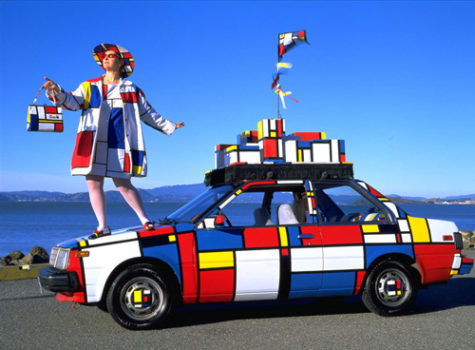
Many people spend hours at a time in their cars which become like mini-homes. Like our homes, they become a reflection and extension of ourselves. Negative chi in cars has the power to create lasting damage and destruction to their owners and to others.
Some people talk to their cars, others give them names and personalize them. In some parts of the world they are blessed. Negative energy breeds negative response, so we should aim to build up a caring relationship with our cars.
For our de-clutter activity today, go out to your car and take a good long look. Does the outside look good and is the inside a mess? Does it look like it belongs to a bag lady? Or maybe it looks like it just came back from a mud wrestling contest. This car is your best friend. If your best friend arrived at your house, looking like that, what would you do?
So now you know what needs to be done, don’t put it off for another minute. Just do it.
- Radical Self Care Project Overview by shirleytwofeathers - No Comment
- Radical Self Care Image Gallery by shirleytwofeathers - No Comment
- It’s A Wrap by shirleytwofeathers - 3 Comments
- Something To Consider by shirleytwofeathers - 1 Comment
- Nurturing Your Precious Self by shirleytwofeathers - 3 Comments
me: Make Your Own Violet Fire
Abdulrahman: Money Chant – Very Fast
Shirley Twofeathers: It’s A Wrap
Daniel Knirs: It’s A Wrap
Shirley Twofeathers: It’s A Wrap
